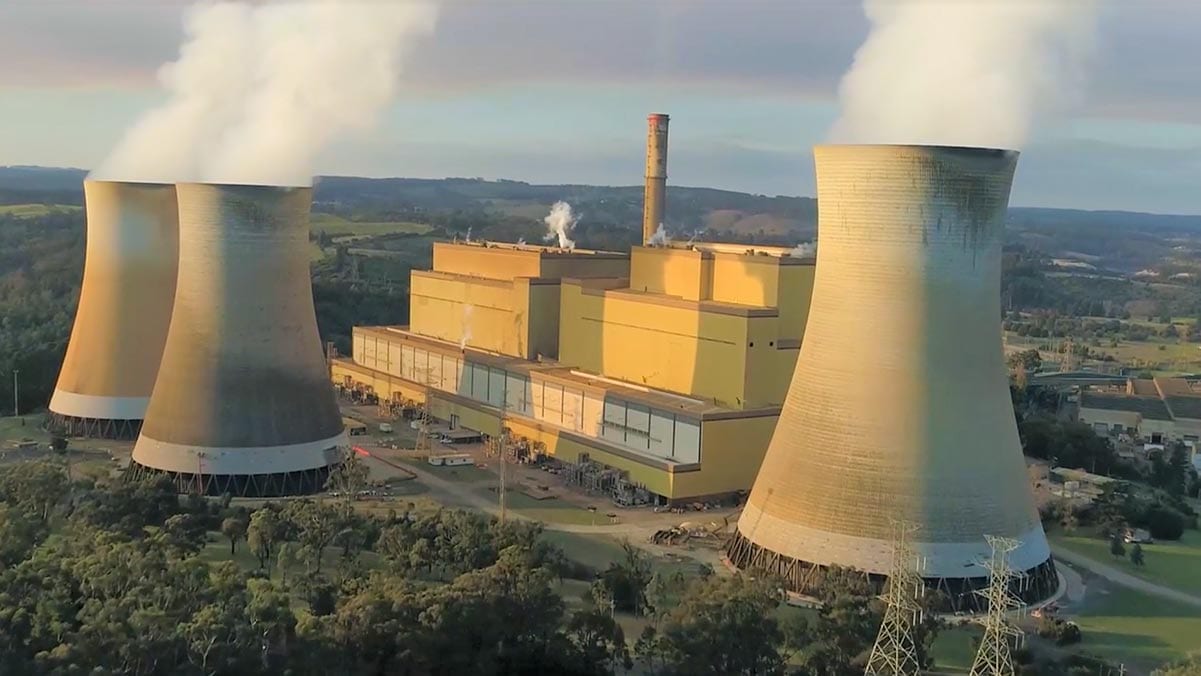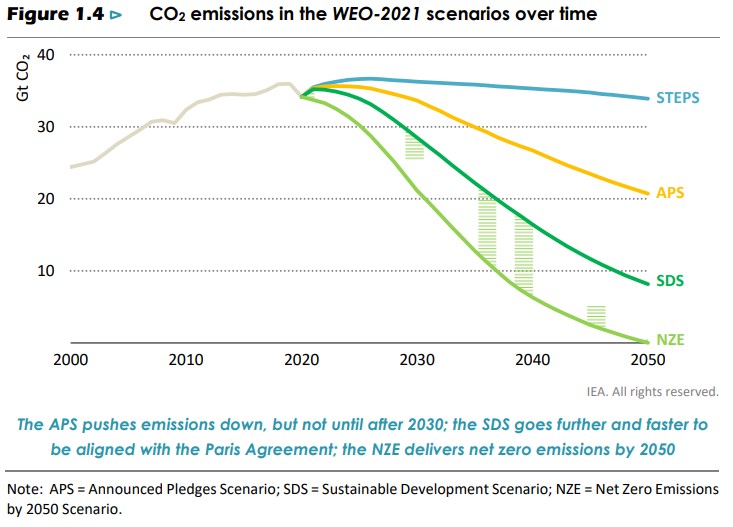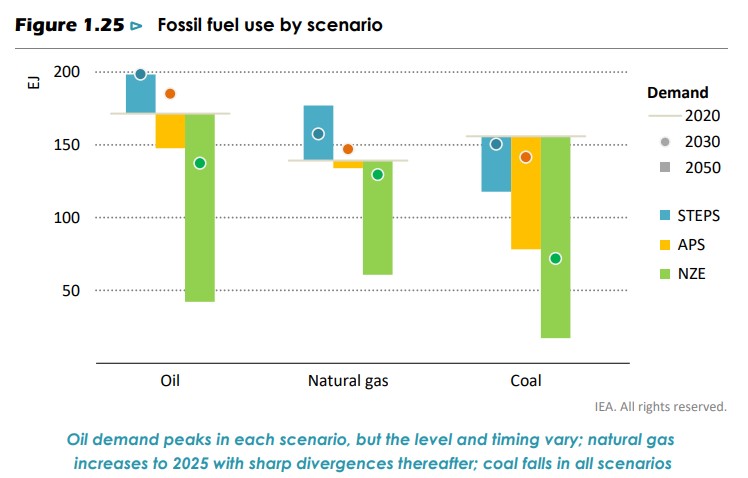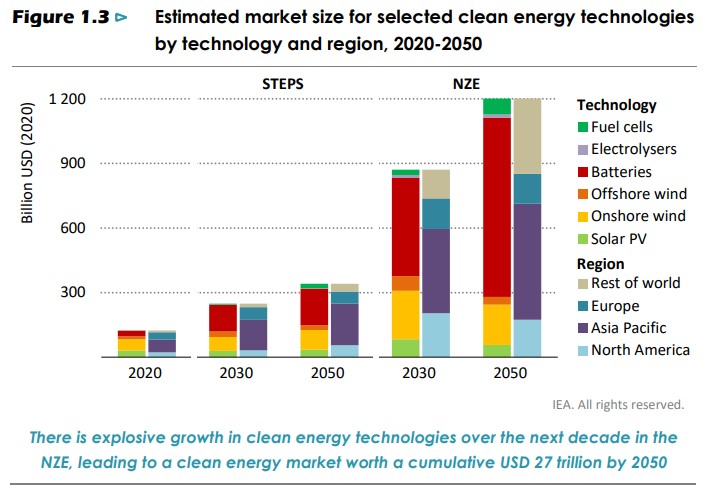The International Energy Agency has delivered a stark warning to world leaders ahead of the Glasgow climate summit, saying the world is on track for dangerous levels of global warming, and clean energy investment and the phase-out of fossil fuels must be rapidly accelerated.
The IEA published a special edition of its World Energy Outlook on Wednesday, two weeks ahead of COP26, which makes clear the world is not on track to achieve the Paris Agreement goal of limiting average global warming to 1.5 degrees.
It says that while investment in new wind and solar capacity has continued to surge to new highs, the world is also on track to record the second-largest annual increase in carbon dioxide emissions in history due to the “stubborn incumbency” of fossil fuels.
Executive director Fatih Birol says the significant boom underway in clean energy investment is not happening at a rate fast enough to put the world on track to achieve zero net emissions by 2050.
“The world’s hugely encouraging clean energy momentum is running up against the stubborn incumbency of fossil fuels in our energy systems,” Birol said.
“Governments need to resolve this at COP26 by giving a clear and unmistakable signal that they are committed to rapidly scaling up the clean and resilient technologies of the future. The social and economic benefits of accelerating clean energy transitions are huge, and the costs of inaction are immense.”
The IEA said that it had deliberately timed the special edition of its World Energy Outlook to coincide with the COP26 talks, to send a message to world leaders of the need to both ramp up support for investment in clean energy capacity, as well as actively plan to phase-out the use of fossil fuels.
“Decarbonising the global power sector is not only a question of expanding low emissions generation but also of tackling emissions from existing sources. This requires an end to investment in new unabated coal‐fired power plants, as well as strategies to retrofit, repurpose or retire existing ones,” the report says.
The IEA modelled three core scenarios, based on reaching zero net emissions by 2050 (NZE), a scenario based on announced pledges made by countries to cut emissions (APS) and a scenario based on currently stated policy settings (STEPS).
The report finds that there is a vast discrepancy between the emissions trajectories produced by the three scenarios, with current policies being hugely insufficient to establish a viable path to zero emissions.
The IEA says that under current policy settings, fossil fuel use is expected to increase due to weak policy signals that allow the use of emissions intensive fuels to grow.
The report says that global coal use would need to be cut by as much as 55 per cent by 2030 and by 90 per cent by 2050, in a scenario consistent with reaching zero net emissions by 2050.
It’s a message that stands in stark contrast with those of the Morrison government in Australia, which claims fossil fuel industries can still thrive under a transition to zero net emissions.
The IEA says the vast majority of remaining coal use in 2050 must be paired with carbon capture and storage.
The report finds that there will be an extraordinarily large market opportunity for clean energy technologies in a transition to zero net emissions – with the global clean energy sector growing to than US$1.2 trillion (A$1.6 trillion) annually by 2050, and a cumulative opportunity of US$27 trillion (A$36.8 trillion) over the next three decades.
Birol pointed to the weak emissions reduction pledges being put forward by countries as providing an insufficient signal for the amount of investment needed to limit global warming to safe levels and called on governments to lift their 2030 emissions reduction targets ahead of the COP26 meeting in Glasgow.
“Today’s climate pledges would result in only 20% of the emissions reduction by 2030 that are necessary to put the world on a path towards net zero by 2050,” Dr Birol said.
“Reaching that path requires investment in clean energy projects and infrastructure to more than triple over the next decade. Some 70% of that additional spending needs to happen in emerging and developing economies, where financing is scarce and capital remains up to seven times more expensive than in advanced economies.”
“We are not investing enough to meet for future energy needs, and the uncertainties are setting the stage for a volatile period ahead. The way to address this mismatch is clear – a major boost in clean energy investment, across all technologies and all markets. But this needs to happen quickly,” Birol added.
It is a message relevant to countries like Australia – which is aiming to cut emissions by just 26 to 28 per cent by 2030 and has still yet to commit to zero net emissions.
Federal energy minister Angus Taylor has been trying to convince his Coalition counterparts that Australia can commit to a 2050 net zero target without impacting the coal and gas industry – going so far as saying he thinks the coal, oil and gas industries “have a great future”.
But the IEA’s latest report makes the situation clear – the only way to get to zero emissions is to cut global coal use dramatically, and more jobs and new economic opportunities will be created by a shift to clean energy.
The IEA called on governments to focus on four key measures to accelerate the pace of decarbonisation, including investing in further electrification of energy use, boosting investment in energy efficiency, cutting methane emissions from fossil fuel operations and accelerating investment in new clean tech innovation.
“These investments also create huge economic opportunities. Successfully pursuing net zero would create a market for wind turbines, solar panels, lithium-ion batteries, electrolysers and fuel cells of well over USD 1 trillion a year by 2050, comparable in size to the current oil market,” the IEA says.













